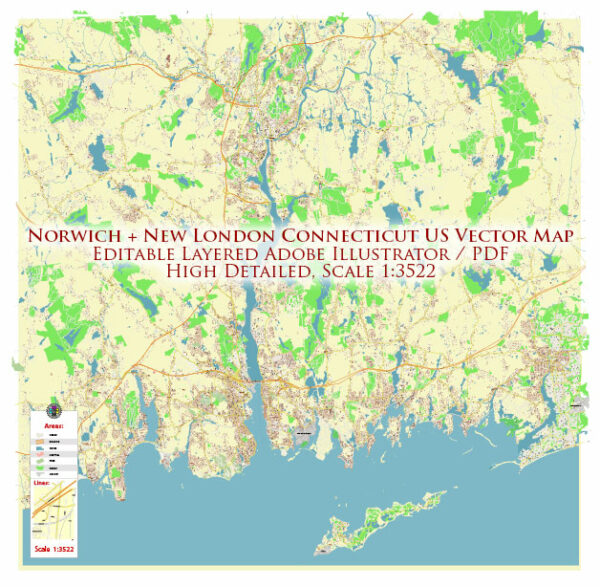Norwich and New London are two cities in southeastern Connecticut with rich histories, and their urban development reflects the broader trends in American history. Here’s a brief overview of the history of urban development in Norwich and New London:
Norwich:
Colonial Era:
- Norwich was settled in 1659 by a group of settlers from Old Saybrook.
- It became an important colonial town with a thriving shipping and shipbuilding industry due to its location along the Thames River.
Industrialization:
- In the 19th century, Norwich experienced significant industrialization, with the development of mills and factories.
- The city became known for its textile industry, manufacturing products such as textiles, rubber, and shoes.
- The arrival of the railroad in the mid-19th century further stimulated economic growth.
Decline and Revitalization:
- Like many industrial cities, Norwich faced economic decline in the mid-20th century.
- Efforts at revitalization have focused on preserving the historic character of the city, including the rehabilitation of old mill buildings into residential and commercial spaces.
Cultural and Educational Hub:
- Norwich has a strong cultural heritage, with historic sites like the Leffingwell House Museum and the Slater Memorial Museum.
- It is also home to the Norwich Free Academy, a prominent private high school founded in 1854.
New London:
Colonial and Revolutionary Periods:
- New London, founded in 1646, played a significant role in trade and commerce during the colonial period.
- It was an important port and military center during the Revolutionary War.
Whaling and Maritime Trade:
- In the 19th century, New London was a major whaling port and engaged in maritime trade.
- The city’s wealth from maritime activities is reflected in the historic homes and architecture along the waterfront.
Military Presence:
- New London has a strong military presence with the United States Coast Guard Academy, established in 1876.
- The Naval Submarine Base New London, commissioned in 1916, is another key military installation.
Modern Developments:
- In the mid-20th century, like many industrial cities, New London faced economic challenges.
- The city has seen revitalization efforts, including the construction of the National Coast Guard Museum and continued emphasis on waterfront development.
Shared Characteristics:
- Both cities have actively preserved their historic districts, with colonial and Victorian architecture contributing to their charm.
- The Thames River has played a crucial role in the development of both cities, serving as a transportation route and an economic resource.
Overall, the histories of Norwich and New London are intertwined with the broader economic, industrial, and cultural developments in the United States. Today, they continue to evolve while preserving their rich historical legacies.


 Author: Kirill Shrayber, Ph.D.
Author: Kirill Shrayber, Ph.D.